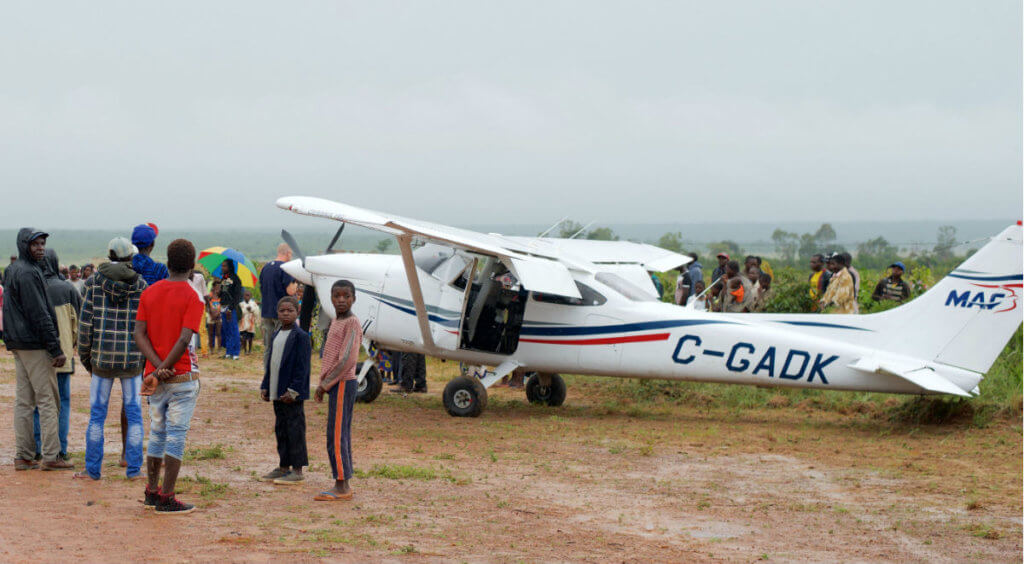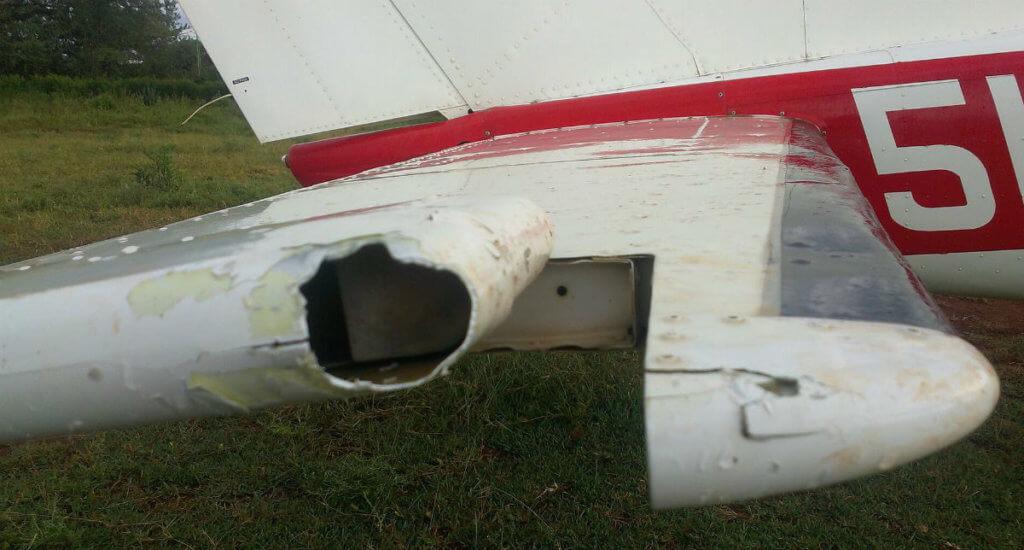Estimated reading time 6 minutes, 54 seconds.
Wildlife and aircraft just don’t mix. In Canada, that means avoiding bird strikes or deer that have ventured onto airport runways–but for pilots with Mission Aviation Fellowship (MAF), it could mean dealing with the aftermath of hungry hyenas.

Globally, MAF–a 71-year-old Christian non-profit charitable organization that delivers airborne aid to Earth’s most isolated populations–operates the world’s largest fleet of 135 private aircraft in 26 countries.
Its 307 pilots, mechanics and avionics specialists are used to conquering some pretty unique challenges, but a hyena attack in Haydom, Tanzania was a first. When MAF pilot Kirstein Combrink showed up at the airport one day in March 2015 to prepare for a medical safari flight, he was shocked to see the creatures had gnawed gaping holes in the elevator of his Cessna 206. The attack had occurred in the wee hours of the morning, just 30 metres from the watchman’s hut.

Wildlife aside, MAF pilots face other challenges too, including landing on rudimentary airstrips that have literally been hacked out of the jungle with machetes.
MAF aircraft flew to 1,498 destinations in 2015, more than any airline. Along with 1,500-plus partner groups, the organization flew 178,301 passengers and 6.3 million kilograms of freight on more than 64,357 flights last year alone.
“We try to focus on areas that are hard to get to–we’ll go out into the furthest reaches,” said Beth Round, communications coordinator at MAF’s Canadian branch in Guelph, Ont. “We find that we’ll save people a five-day trip by road and we can make it in five hours. We try not to go where there are already viable modes of transportation.”
The Guelph office was established in 1973. Today, just over 50 Canadian families are serving with MAF Canada in 16 countries around the world.
“If a pilot is interested, they contact us,” said Round. “We do have a training partnership established with Prairie College’s Mission Aviation Program in Three Hills, Alta. Once they have their pilot training finished [whether at Prairie College or another flight school], they complete a technical and standardization evaluation to make sure they are able to fly for MAF. If they pass that, they do a cultural orientation and we look for the best fit for their abilities and their family.”

Generally, MAF Canada’s staff members serve four-year terms in the field, with some alternating foreign placements with home-based assignments.
“We find our median is about 10 years of service, but some have been out there for 35 or more years,” said Round.
She explained that MAF is a non-profit charity funded entirely by donations that cover fuel, wages and operational costs.
“Our pilots do receive a paycheque, but it’s completely donor-funded. We do subsidized flying for those in need; donors allow us to do it at a reduced or free rate. Money comes from the general population–people decide to give or churches will donate.”
World’s largest private aircraft fleet
Seven of MAF’s 135 international aircraft are owned by the Canadian branch, including three in Angola (a Cessna 208 Caravan and two Cessna SMA 182s); a Quest Kodiak placed in Ecuador; a Cessna 172 in Southeast Asia; and a Cessna R-182 in the Democratic Republic of Congo. In addition, the organization owns a Cessna 182 that is used for training at Prairie’s Mission Aviation Program.
Round said that before any human or aviation assets are placed, MAF studies each request.
“We determine the needs of an area and whether we will be able to get the proper permissions to operate. We look for partner organizations in the area and we will also look at whether or not there are already other transportation options, to determine if MAF flights are truly needed. We do these studies on an ongoing basis, and also assess the areas where we are already serving. Some infrastructure may become better developed or may in fact worsen due to civil war, natural disaster or other factors.”

As an example, MAF Canada has been overseeing a program in Angola since 1989. The organization has been helping over four million Angolans who are without health care by delivering emergency medevac services and other supplies like mosquito nets, hospital supplies and even baby chicks.
From 1989 to 2015, MAF Canada carried 84,409 passengers, flew 18,162 flights and delivered more than 3.3 million kilograms of cargo to remote areas in Angola.
The organization also coordinates donor-funded medical safaris, where doctors volunteer their time to help those in need. In one example, said Round, an opthamologist performed up to 70 cataract surgeries in one weekend.

Working closely with MAF International, the Canadian chapter is supported by 17 office staff who process donations and coordinate personnel development, travel, and fundraising initiatives.
“Our mission is all about giving communities access to resources they wouldn’t normally have,” concluded Round.
But for MAF personnel working in the field, it’s all about the experience of a lifetime.








